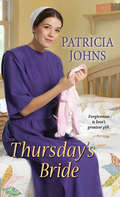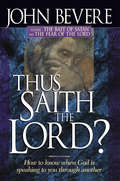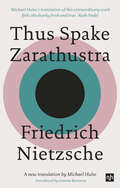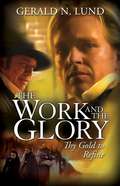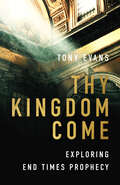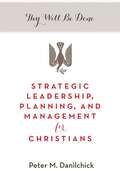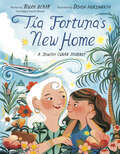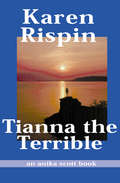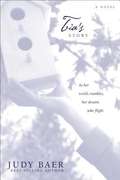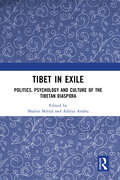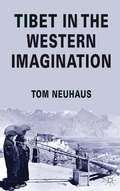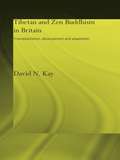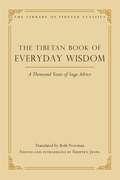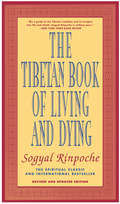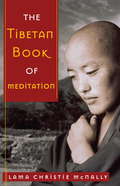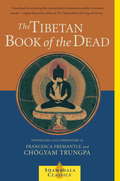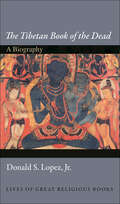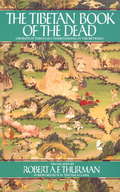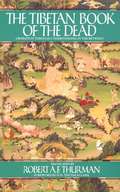- Table View
- List View
Thursday's Bride
by Patricia JohnsFor a proper young Amish widow struggling to begin again, encountering her reckless first love will test her forgiveness, resolve—and heart . . . Overwhelmed by grief and tending twin baby daughters, Rosmanda Lapp is without options. She still blames her brother-in-law, Levi, for her husband’s accidental death—but she and her aging in-laws need him to keep their farm going. Yet as Levi takes on his responsibilities with a new determination and steadiness, she can’t help but regret that she chose his serious-minded brother over him. For Levi is still very much the passionate man she loved—and Rosmanda now has even more reasons to keep him at arm's length . . . Levi can’t blame Rosmanda for staying clear of him. He has mistakes to make up for and must finally do right by his parents. Still, he never got over his brother stealing Rosmanda away. And he can’t deny the feelings that even now tempt them back to each other. And when a mistake from her past threatens her reputation, Levi will do whatever it takes to help her—and trust that faith and courage will at last help them claim a future together . . .
Thus Saith The Lord: How to know when God is speaking to you through another
by John BevereYou can discern truth from deception. Jesus sternly warned,"See to it that no one misleads you" (Matt. 24:4, NAS). To be misled is to be deceived. Jesus makes it clear--it is our responsibility to discern truth from deception. This includes rightly dividing genuine spiritual authority from counterfeit. This crucial and timely message reveals: •How to recognize true and false authority •The deceptive tactics of false authority •What brings spiritual maturity •And much more...
Thus Spake Zarathustra: A Book for All and None
by Friedrich NietzscheA new translation of Nietzsche&’s seminal work by a prize-winning translator of W. G. Sebald, Goethe, Rilke, Herta Müller, and Elfriede Jelinek.In Thus Spake Zarathustra, Nietzsche&’s infamous protagonist sets off on a grand and noble quest to find meaning in a secular world and to live joyfully alongside the knowledge of death. In this new translation by Michael Hulse—the first in English by a poet—Zarathustra is revealed in all his bold and ironic splendor as a man who prizes self-worth above all else as a moral code to live by. Radical, uncategorizable, contradictory, and often humorous, Thus Spake Zarathustra is a grand celebration of human existence by one of the most influential thinkers of the past two centuries.
Thus Spoke the Plant: A Remarkable Journey of Groundbreaking Scientific Discoveries and Personal Encounters with Plants
by Monica GaglianoAn accessible and compelling story of a scientist's discovery of plant communication and how it influenced her research and changed her life.In this "phytobiography"--a collection of stories written in partnership with a plant--research scientist, Monica Gagliano, reveals the dynamic role plants play in genuine first-hand accounts from her research into plant communication and cognition. By transcending the view of plants as the objects of scientific materialism, Gagliano encourages us to rethink plants as people--beings with subjectivity, consciousness, and volition, and hence having the capacity for their own perspectives and voices. The book draws on up-close-and-personal encounters with the plants themselves, as well as plant shamans, indigenous elders, and mystics from around the world and integrates these experiences with an incredible research journey and the groundbreaking scientific discoveries that emerged from it. Gagliano has published numerous peer-reviewed scientific papers on how plants have a Pavlov-like response to stimuli and can learn, remember, and communicate to neighboring plants. She has pioneered the brand-new research field of plant bioacoustics, for the first time experimentally demonstrating that plants emit their own 'voices' and, moreover, detect and respond to the sounds of their environments. By demonstrating experimentally that learning is not the exclusive province of animals, Gagliano has re-ignited the discourse on plant subjectivity and ethical and legal standing. This is the story of how she made those discoveries and how the plants helped her along the way.
Thy Brother's Wife (Passover #1)
by Andrew M. GreeleyIt was during the summer of 1938 that Michael Cronin decided that his elder son, Paul, was to become president of the United States and that his younger son, Sean, was to become a priest and "probably a cardinal." The decision was made spontaneously, without reflection. Nonetheless, it was permanent and irrevocable.
Thy Gold To Refine (The Work and the Glory Vol #4)
by Gerald N. LundThy Gold to Refine covers one of the stormiest and trying, yet inspiring periods of Church history. The Steeds are reunited in Far West, Missouri, all the while animosity towards the Mormons is growing unchecked. Violence erupts and Governor Boggs issues an extermination order for the Mormons leading to the spilling of innocent blood at the Haun's Mill massacre. Far West falls, Joseph Smith is jailed, and the Mormon Saints are forced from Missouri. Even Joshua Steed takes up arms, but will he fight for or against the Mormons?
Thy Kingdom Come: Exploring End Times Prophecy
by Tony EvansIf you knew Jesus was coming back at this time next year, would you be doing some things differently today? What if you knew He was coming back next month, next week, tomorrow—or even at the end of this day? Would you be in a real hurry to do some things differently? Dr. Tony EvansWhat is God doing in the world today? What is His plan for the future? And what do his plans have to do with me? As a respected and beloved pastor, Dr. Tony Evans helps us understand Bible prophecy and God&’s eternal plan for our lives. In part one, Evans points to the Bible&’s trustworthy accounts of fulfilled prophecy—we can draw comfort and assurance from God&’s good plan. In part two, Evans explores the end times, including prophecies of the rapture, Antichrist, Tribulation, Christ&’s second coming, and the millennium.As we understand the Bible&’s prophetic passages about tomorrow, our life is impacted today. In Thy Kingdom Come, Evans offers believers confidence and hope. Jesus Christ could return today. This understanding will inspire you to love and serve Him fully and faithfully now.
Thy Will Be Done: Strategic Leadership, Planning, And Management For Christians
by Peter M. DanilchickPeter Danilchick, a protodeacon and retired corporate executive, brings his experience and expertise to bear on the meaning, challenges, and techniques of strategic leadership, planning, and management for Christians. Many books examine these skills from a business perspective, but none have incorporated the timeless wisdom of the Orthodox faith. Thy Will Be Done serves as a bridge between the ecclesiastical and corporate worlds, drawing on Scripture and the Church fathers, together with the strategies and best practices of the business world. In this unique book the meaning and goals of leadership are explored, and readers discover their vocation as Christian leaders: prophets, priests, and kings who by virtue of their baptism are called to servant leadership. We further learn about those called to ordained service (deacons, priests, and bishops), who exemplify the threefold ministry of service, sacrifice, and oversight. Danilchick then unfolds the steps of strategic planning, and the day-to-day concerns of strategic management: board governance, ethics and compliance issues, organizing and running meetings, reaching agreement with disagreeable people, HR management, organizational finances, stewardship reports, and fundraising. From the mystical to the practical, from the hesychastic fathers to compliance with tax regulations, Christian leaders will find the tools that equip them to lead, to plan, and to manage as Christians, in both the Church and the world.
Tía Fortuna's New Home: A Jewish Cuban Journey
by Ruth BeharA poignant multicultural ode to family and what it means to create a home as one girl helps her Tía move away from her beloved Miami apartment.When Estrella's Tía Fortuna has to say goodbye to her longtime Miami apartment building, The Seaway, to move to an assisted living community, Estrella spends the day with her. Tía explains the significance of her most important possessions from both her Cuban and Jewish culture, as they learn to say goodbye together and explore a new beginning for Tía.A lyrical book about tradition, culture, and togetherness, Tía Fortuna's New Home explores Tía and Estrella's Sephardic Jewish and Cuban heritage. Through Tía's journey, Estrella will learn that as long as you have your family, home is truly where the heart is.
Tianna the Terrible (Anika Scott #2)
by Karen RispinBeing twelve isn't easy. But Anika Scott, who has joined her parents as a missionary in Kenya, uses her faith and trust in God and His words as guidance to help her through her adolescent problems. Join Anika in her exciting and often dangerous adventures where using God and her own ingenuity she makes discoveries about the truth in the world. What do you do when you've been thrown into a world that scares and confuses you? What if the one person who is supposed to help you adjust to your frightening situation is just plain mean? Watch Anika discover the answers to these difficult questions and more in her latest adventure. She will need to use all of God's gentle words and guidance to put up with Tianna the Terrible!
Tibet in Exile: Politics, Psychology and Culture of the Tibetan Diaspora
by Shalini MittalThis book delves deep into the lived experiences of the Tibetan diaspora, offering an insightful exploration through the intersecting lenses of politics, psychology, and culture. Drawing from the expertise of scholars in fields such as political science, sociology, psychology, and cultural studies, the book provides a rich, multidisciplinary analysis that reveals the complexities of Tibetan life in exile. It meticulously examines the delicate diplomacy between the Tibetan government-in-exile and host nations, unraveling the intricate political dynamics that shape the aspirations and challenges faced by Tibetans abroad. In addition to political analysis, the book sheds light on the psychological resilience and cultural innovation within the Tibetan community. Through an exploration of art, music, literature, and religious practices, it uncovers how Tibetans have creatively reimagined and redefined their cultural identity in the face of displacement and adversity. This volume is an essential resource for students, researchers, and educators in anthropology, political science, sociology, psychology, and cultural studies. It also serves as a valuable tool for policymakers, advocates, and activists engaged in issues of diaspora, migration, human rights, and social justice. For anyone seeking to understand the profound impact of exile, the endurance of cultural identity, and the strength of community, this book is a must-read. This version aims to be more engaging while clearly defining the book’s scope, relevance, and target audience.
Tibet in the Western Imagination
by Tom NeuhausNeuhaus explores the roots of the long-standing European fascination with Tibet, from the Dalai Lama to the Abominable Snowman. Surveying a wide range of travel accounts, official documents, correspondence and fiction, he examines how different people thought about both Tibet and their home cultures.
Tibetan and Zen Buddhism in Britain: Transplantation, Development and Adaptation (Routledge Critical Studies in Buddhism)
by David N KayThis book analyses the transplantation, development and adaptation of the two largest Tibetan and Zen Buddhist organizations currently active on the British religious landscape: the New Kadampa Tradition (NKT) and the Order of Buddhist Contemplatives (OBC). The key contributions of recent scholarship are evaluated and organised thematically to provide a framework for analysis, and the history and current landscape of contemporary Tibetan and Zen Buddhist practice in Britain are also mapped out. A number of patterns and processes identified elsewhere are exemplified, although certain assumptions made about the nature of 'British Buddhism' are subjected to critical scrutiny and challenged.
The Tibetan Book of Everyday Wisdom (Library of Tibetan Classics #1)
by Jinpa Thupten Beth NewmanEnjoy popular Tibetan collections of advice, fables, and aphorisms for following the way of the wise and avoiding the paths of fools.The Tibetan Book of Everdyay Wisdom: A Thousand Years of Sage Advice presents a genre of Tibetan works known as “wise sayings” (lekshé). While most Tibetan literature focuses on the Buddhist path, “wise sayings” literature has traditionally been a centerpiece of secular education in Tibet and in the cultivation of social mores and an honorable way of life. Drawing inspiration from classical Indian literature on human virtue and governance (nitisastra), including the folktales in the Pañcatantra, the authors of these Tibetan works strove to educate young minds in the ways of the civilized world, especially by distinguishing the conduct of the wise from that of the foolish. This anthology includes some of the best-loved classics of Tibetan literature, such as Sakya Pandita’s Jewel Treasury of Wise Sayings, Panchen Sönam Drakpa’s Ganden Wise Sayings, and Gungthang’s Treatise on Trees and Treatise on Water. The final work is the intriguing Kaché Phalu’s Advice. Ostensibly written by a wise Tibetan Muslim, this versified text enjoys great popularity within Tibetan-speaking communities, such that most people are able to recite at least a few verses from memory.
The Tibetan Book of Living and Dying
by Sogyal Rinpoche"What is it I hope for from this book? To inspire a quiet revolution in the whole way we look at health and care for the dying, and the whole way we look at life and care for the living."This acclaimed spiritual masterpiece is widely regarded as one of the most complete and authoritative presen-tations of the Tibetan Buddhist teachings ever written. A manual for life and death and a magnificent source of sacred inspiration from the heart of the Tibetan tradition, The Tibetan Book of Living and Dying provides a lucid and inspiring intro-duction to the practice of meditation, to the nature of mind, to karma and rebirth, to compassionate love and care for the dying, and to the trials and rewards of the spiritual path.Buddhist meditation master and international teacher Sogyal Rinpoche brings together the ancient wisdom of Tibet with modern research on death and dying and the nature of the universe. With unprecedented scope, The Tibetan Book of Living and Dying clarifies the majestic vision of life and death that underlies the classic sacred text The Tibetan Book of the Dead. Sogyal Rinpoche presents simple yet powerful practices from the heart of the Tibetan tradition that anyone, whatever their religion or background, can do to transform their lives, prepare for death, and help the dying.
The Tibetan Book of Living and Dying
by Sogyal Rinpoche"What is it I hope for from this book? To inspire a quiet revolution in the whole way we look at health and care for the dying, and the whole way we look at life and care for the living."This acclaimed spiritual masterpiece is widely regarded as one of the most complete and authoritative presen-tations of the Tibetan Buddhist teachings ever written. A manual for life and death and a magnificent source of sacred inspiration from the heart of the Tibetan tradition, The Tibetan Book of Living and Dying provides a lucid and inspiring intro-duction to the practice of meditation, to the nature of mind, to karma and rebirth, to compassionate love and care for the dying, and to the trials and rewards of the spiritual path.Buddhist meditation master and international teacher Sogyal Rinpoche brings together the ancient wisdom of Tibet with modern research on death and dying and the nature of the universe. With unprecedented scope, The Tibetan Book of Living and Dying clarifies the majestic vision of life and death that underlies the classic sacred text The Tibetan Book of the Dead. Sogyal Rinpoche presents simple yet powerful practices from the heart of the Tibetan tradition that anyone, whatever their religion or background, can do to transform their lives, prepare for death, and help the dying.
The Tibetan Book of Living and Dying
by Sogyal RinpocheIn this major and comprehensive work, Buddhist meditation master and international speaker Sogyal Rinpoche brings together the ancient wisdom of Tibet with modern research on death and dying and the nature of the universe. With unprecedented scope, The Tibetan Book of Living and Dying clarifies the majestic vision of life and death that underlies The Tibetan Book of the Dead. Sogyal Rinpoche presents simple yet powerful practices from the heart of the Tibetan tradition that anyone, whatever their religion or background, can do to transform their lives, prepare for death, and help the dying.Rinpoche shows the hope there is in death: how we can go beyond denial and fear to discover what it is in us that survives death and is changeless. He presents a lucid, inspiring, and complete introduction to the practice of meditation, to karma and rebirth, and to the trials and rewards of the spiritual path. He gives advice on how to care for the dying with love and compassion and offer them spiritual assistance.Rinpoche presents his own vision of the near-death experience from the Tibetan perspective. He explains in detail the "bardos," those states of consciousness after death that have fascinated and tantalized Western artists, psychologists, scientists, doctors, and philosophers ever since the publication of The Tibetan Book of the Dead in 1927.The Tibetan Book of Living and Dying is not only a spiritual masterpiece but also a manual, a guide, a work of reference, and a source of sacred inspiration. It has been written to inspire all who read it to begin the journey to enlightenment and so become "servants of peace," working in the world with joy, wisdom, and compassion to take part in safeguarding the future of humanity.
The Tibetan Book of Meditation
by Lama Christie McnallyLama McNally demonstrates that meditation provides more than mere relaxation. It can awaken a person's innate potential to shape reality, make moments of joy last forever, and bring the peace and contentment that each person ultimately seeks.
The Tibetan Book of the Dead: The Great Liberation Through Hearing In The Bardo
by Francesca Fremantle Chogyam TrungpaIn this classic scripture of Tibetan Buddhism--traditionally read aloud to the dying to help them attain liberation--death and rebirth are seen as a process that provides an opportunity to recognize the true nature of mind. This translation of The Tibetan Book of the Dead emphasizes the practical advice that the book offers to the living. The insightful commentary by Chögyam Trungpa, written in clear, concise language, explains what the text teaches us about human psychology. This book will be of interest to people concerned with death and dying, as well as those who seek greater spiritual understanding in everyday life.
The Tibetan Book of the Dead: First Complete Translation (Penguin Classics Deluxe Edition) (Penguin Classics Deluxe Edition)
by Thupten Jinpa Padmasambhava Gyurme Dorje Graham ColemanOne of the greatest works created by any culture and overwhelmingly the most significant of all Tibetan Buddhist texts in the West, The Tibetan Book of the Dead has had a number of distinguished translations, but none encompassed the work in its entirety. Now, in one of the year's most important publishing events, the entire text has not only been made available in English but in a translation of quite remarkable clarity and beauty. With an introductory commentary by His Holiness The Dalai Lama, who calls this translation "an extraordinary accomplishment undertaken with great care over many years" this complete edition faithfully presents the insights and intentions of the original work. It includes one of the most detailed and compelling descriptions of the after-death state in world literature, exquisitely written practices that can transform our experience of daily life, guidance on helping those who are dying, and an inspirational perspective on coping with bereavement. Translated with the close support of leading contemporary masters, including HH Dilgo Khyentse Rinpoche, and learned scholars such as Khamtrul Rinpoche and Zenkar Rinpoche, His Holiness the Dalai Lama says, "I hope that the profound insights contained in this work will be a source of inspiration and support to many interested people around the world. " .
The Tibetan Book of the Dead: A Biography (Lives of Great Religious #8)
by Donald S. Lopez Jr.How an eccentric spiritualist from Trenton, New Jersey, helped create the most famous text of Tibetan BuddhismThe Tibetan Book of the Dead is the most famous Buddhist text in the West, having sold more than a million copies since it was first published in English in 1927. Carl Jung wrote a commentary on it, Timothy Leary redesigned it as a guidebook for an acid trip, and the Beatles quoted Leary's version in their song "Tomorrow Never Knows." More recently, the book has been adopted by the hospice movement, enshrined by Penguin Classics, and made into an audiobook read by Richard Gere. Yet, as acclaimed writer and scholar of Buddhism Donald Lopez writes, "The Tibetan Book of the Dead is not really Tibetan, it is not really a book, and it is not really about death." In this compelling introduction and short history, Lopez tells the strange story of how a relatively obscure and malleable collection of Buddhist texts of uncertain origin came to be so revered—and so misunderstood—in the West.The central character in this story is Walter Evans-Wentz (1878-1965), an eccentric scholar and spiritual seeker from Trenton, New Jersey, who, despite not knowing the Tibetan language and never visiting the country, crafted and named The Tibetan Book of the Dead. In fact, Lopez argues, Evans-Wentz's book is much more American than Tibetan, owing a greater debt to Theosophy and Madame Blavatsky than to the lamas of the Land of Snows. Indeed, Lopez suggests that the book's perennial appeal stems not only from its origins in magical and mysterious Tibet, but also from the way Evans-Wentz translated the text into the language of a very American spirituality.
The Tibetan Book of the Dead: Awakening Upon Dying
by Padmasambhava Chogyal Namkhai Norbu Nancy Simmons Elio Guarisco Karma LingpaThe Tibetan Book of the Dead: Awakening Upon Dying, with introductory commentary by Dzogchen Buddhist master Chogyal Namkhai Norbu, is a new translation of the ancient text also known as The Great Liberation through Hearing in the Intermediate State. Both a practical guide and intriguing historical, cultural, and spiritual document, this new version incorporates recent discoveries that have allowed for a better translation of previously ambiguous passages. Revealing a set of instructions designed to facilitate the inner liberation of the dead or dying person, the book provides a guide to navigating the bardo--the interval between death and rebirth. Originally composed by Padmasambhava, an important Indian master of the eighth century, the Tibetan Book of the Dead was concealed in Tibet until it was discovered in the fourteenth century by Karma Lingpa, a famous Tibetan terton (discoverer of ancient texts). Describing in detail the characteristics and fantastic visions of each stage beyond death, the book includes invocations to be read aloud to the dying person, to help his or her successful journey toward the stage of liberation. Chogyal Namkhai Norbu's introduction clarifies the texts from the Dzogchen point of view and provides a scholarly summary of the ancient material based on his oral teachings and written works. In addition, material from several of Namkhai Norbu's more recent written works and oral teachers have been added, including an essay on the four intermediate states after death entitled Birth, Life, and Death. A full-color 16-page insert of traditional Tibetan art highlights Tibet's unique aesthetic wisdom. From the Trade Paperback edition.Death and in the Afterlife States; Appendix One: The Symbolism of the Peaceful and Wrathful Deities in the Tibetan Book of the Dead; Appendix Two: Some Editions of the Tibetan Book of the Dead; Bibliography; IndexFrom the Trade Paperback edition.
Tibetan Book of the Dead
by Robert ThurmanThe most prominent expert on Tibetan Buddhism in the West offers a translation of this essential book of Tibetan philosophy that captures the true spirit and poetry of the original work--a profound book that reveals the nature of the mind and its manifestations and offers pure enlightenment.
The Tibetan Book of the Dead
by Robert A. Thurman Padma SambhavaThe expert on Tibetan Buddhism in the West offers a translation of this book of Tibetan philosophy that captures the true spirit and poetry of the original book that reveals the nature of the mind and its manifestations and offers pure enlightenment.
